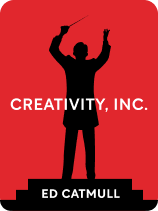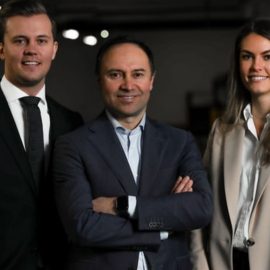

This article is an excerpt from the Shortform book guide to "Creativity, Inc." by Ed Catmull. Shortform has the world's best summaries and analyses of books you should be reading.
Like this article? Sign up for a free trial here .
What are creative organizations? How do creative organizations sometimes face unique challenges?
Creative organizations have to find a way to fit into the rigor of a business environment. Your organization can’t stick around if it isn’t making money, but you also want creatives to thrive.
Here are four tools for creative organizations from Creativity, Inc. by Ed Catmull.
Tools for Creative Organizations
To ensure that your creative organizations don’t fall into inflexibility, create opportunities for them to expand their worldview and interact with people who have different perspectives. The following are four tools you can use to help your team maintain their creative spark and challenge their own perspectives:
Tool #1: Hold Frequent Feedback Meetings
When going through the development process, frequent feedback sessions allow your team members to get different perspectives on their work. This prevents your employees from becoming overly committed to their work and enables them to solve problems collaboratively. Frequent feedback also allows your team to fix potential problems early on instead of after they’ve put dozens or hundreds of hours into a project.
For example, at Pixar, Catmull created a process called “Dailies.” At Dailies, artists and creatives on a project get together at the beginning of the day to present their work for feedback. It allows artists to receive feedback from the entire team throughout the creative process. These changes may range from the size of a stick in the background to an entire character model. Because everyone has a voice and candidness is promoted, Dailies allow artists to look at their work from a different perspective and make adjustments to create a stronger product.
Tool #2: Promote Research
Research is essential to creation and, therefore, creative organizations. Learning more about the subject of your creative project will help you produce a more realistic product. For example, if you want to create a film about living with a dog, you would need to understand what it’s like to have a pet. If you’ve done no research into the topic or haven’t had any experiences with a pet, your film probably won’t be accurate.
Note: Research is best when it’s first-hand. While you can take inspiration from previous creative projects, if you rely solely on the creations of others, your work will likely come across as derivative and unoriginal. The line between inspiration and theft is thin, and you’ll benefit from creating your own work based on personal research. (Shortform note: Think about the way Playmobil: The Movie tried to capitalize on the success of The Lego Movie.)
At Pixar, this first-hand research experience is a high priority. For example, for Ratatouille (a film about a Parisian rat who wants to become a chef), Pixar sent a team to Paris to eat in Michelin-star restaurants, interview chefs, and visit kitchens. Less enjoyably, they also explored Paris’ sewer system to see where the rats resided. Using this research, the team could create a detailed world for their film. While most viewers may not notice many of these intricacies, the details work together to create a relatable environment.
Tool #3: Create Clear Boundaries
Though it may seem counterintuitive, creating boundaries for your teams can actually promote creativity in addition to efficiency. It forces them to approach challenges in a unique way and focus on the most important elements of the project. In many situations, creative solutions can actually produce stronger results than the initial plan.
As an example of the creative benefits, the team working on the original Halloween film had to create Michael Myers’ mask on a tight budget. Unable to afford a custom piece, the art director, Burt Wheeler, had to come up with a creative and cheap solution. Ultimately, he found an odd-looking Captain Kirk mask, spray painted it, and modified the eye holes so the actor could see. The result of this creative obstacle: one of the most iconic looks in horror movie history. (Shortform note: This example was pulled from this article.)
To improve efficiency, Pixar had to set boundaries because artists were spending too much time investing in things that had no bearing on the story. A Pixar producer came up with a system that limited the amount of time spent on any given aspect of a film. For The Incredibles, Walker posted images of each of the characters in the film. Next to them, he velcroed popsicle sticks to the wall, each representing a “person-week” (the amount of work one animator could complete in a week). If someone wanted to spend more time working on a particular character, they’d have to remove a popsicle stick from another character. This forced the team to focus their time on the most necessary components of the film.
Note: Setting boundaries doesn’t suggest that detailed work is unimportant. Rather, it deals with the realities of deadlines and budget. Of course, you want to create the best product possible. However, with any creative project that has deadlines and monetary restrictions, you have to set priorities for the good of the project as a whole.
Tool #4: Put Aside Your Preconceived Notions
The human brain likes to simplify our surroundings so that they’re easier to process. However, this simplification leads people to jump to conclusions that aren’t entirely accurate. For example, when asked to draw the human face, many people struggle to get the correct proportions. This is because the brain emphasizes the “important” parts of the face such as the eyes and ignores the “unimportant” parts such as the forehead.
In creative organizations, seeing something for what it is rather than what you want it to be is essential. This level of objectivity allows you to notice errors more quickly and pay attention to details you may not have previously noticed. This creates depth within your projects and ensures you’re producing a fully realized product.
For example, when an artist learns to pay attention to the details of an object, they have to let go of any preconceived notions they may have about the subject. Rather than just painting a lake the color blue, they become attuned to the small flecks of green, yellow, and white that reflect off of the top of a river. This attention to detail allows them to create a more fully realized version of their surroundings.

———End of Preview———
Like what you just read? Read the rest of the world's best book summary and analysis of Ed Catmull's "Creativity, Inc." at Shortform .
Here's what you'll find in our full Creativity, Inc. summary :
- How Pixar went from selling computers to successful animation studio
- What it takes to build a creative workplace culture
- Why George Lucas sold Pixar to Steve Jobs






